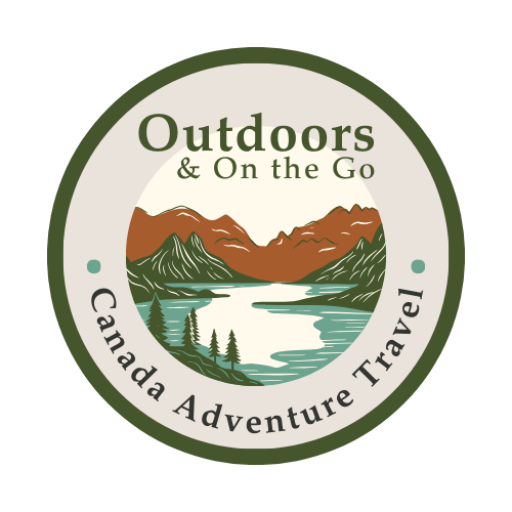Disclosure: There are some affiliate links below, for which commissions are paid, but these are all products I highly recommend. I won’t put anything on this page that I haven’t verified and/or personally used.
November and December are not usually the first months you think of when you want to have an Atlantic Adventure, but what a nice time to see this unique area of Canada! It’s raw, remote and wild. Bare of leaves, the land is exposed, you can appreciate the topography – rolling hills and rugged cliffs – to its maximum.
Plan your Atlantic Canadian adventure with Lonely Planets Canada Travel Guide
I left Newfoundland on the night ferry. The next day, I was off to the Cape Breton Highlands, driving the winding roads, marvelling at the barren landscape.
Stopping into the Parks Canada offices, I was given the lowdown on what was open, what was closed and where to camp. With my map and full tank, I set off to explore.
My first hike was Franey Mountain. This 7.5km trail gains just about 400 metres and provides beautiful views of South Bay Ingonish and Cape Smokey. I wandered through the maritime boreal forest, noticing the stark difference in the trees – oak, beech, and pine – trees you do not see in Newfoundland. Acorns litter the ground, fungi are everywhere, snow falls softly and small creeks trickle through the silence. I have the whole trail to myself. I find a rocky outcrop and settle in for a picnic. The sun breaks through the foggy, low clouds, I am warmed and provided with a spectacular view of the coastline of the Cape Breton Highlands.

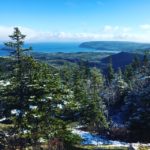


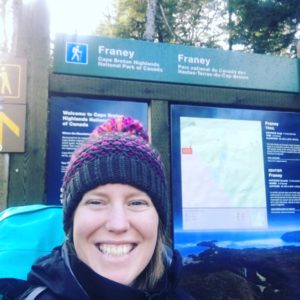


With the weather cooperating, I drove north, stopping a few times to appreciate the low light on the pink granite rocks and dark ocean. I even captured a few rainbows, as low clouds and sun danced along the coastline.
I wandered the old growth forest, for which the park was designed to protect. At 350 years old, the majestic oaks and beeches towered over me. I had no idea there was any old growth left in Atlantic Canada, not that I didn’t believe there wasn’t any, I had just never thought about it. The northern valley of Cape Breton Highlands National Park is all old growth. The hills roll on and these big trees dominate the hillsides.
Although the campsites are “closed for the season” and there are no services, I was able to sleep in my car in the campground. Needless to say, it was a quiet night!
The next day I finished the Cabot Trail, taking time to watch the waves roll on the beaches and the sea stacks endure the forces of the wind. I drove through small towns, with old houses and big barns. I love old buildings, their character, their hidden stories.
Driving the TCH west, I set my sights on the Hopewell Rocks and Fundy National Park, enroute to Frederickton. The Hopewell Rocks area is also closed for the season, so it’s enter at your own risk – which was fine by me! I caught the low tide and the sunset, the rocks looming up from the sea floor like giants.
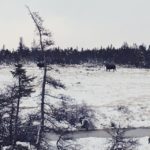
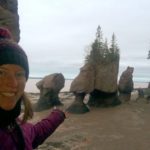
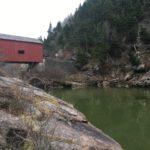
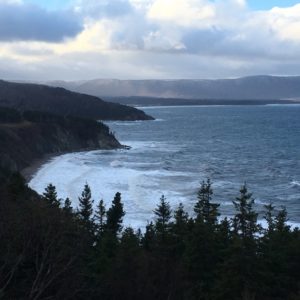
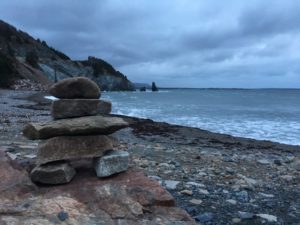
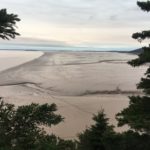
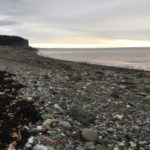
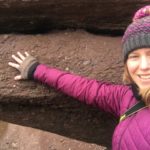

The Atlantic Adventure continued as I spent the next morning exploring the beaches of Fundy National Park, learning about the Hopewell conglomerate and the highest tides in the world. Pretty nifty spot! Lot’s of pics on Instagram under #atlanticadventure!
On to Fredericton, New Brunswick’s capital city and a reunion with a friend from college. I love seeing people and catching up, it’s amazing to see how much everyone changes, grows, and flourishes. Thanks to Brad and his family for the hospitality and spider dogs!
As I drove my way into Quebec, reflecting on my Atlantic adventure, I realized there are so many things I love about Eastern Canada: the terrain, the shoreline, the smell, the people and the way of life. It’s slower than the rest of Canada, more relaxed. The off season is a great time to travel through Canada because to get to have time to talk to people, you can see the sites without all the tourists, and often have the place to yourself. What could be better?
